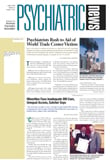Henry, a 50-something-year-old from Dayton, Ohio, grumbled to his wife: “Every time I go to my doctor about this or that symptom, he checks me out and says that he can’t find anything wrong with me! It happened with my night sweats, it happened with the pain in my lower abdomen, it even happened with the mole on my chest. I guess I’m just a hypochondriac!”
Chances are, however, that Henry isn’t a hypochondriac at all since a study published in the May issue of Psychological Medicine suggests that bona-fide hypochondriacs are rare indeed. However, Henry may well be one of those health worriers—health worrywarts if you like—since the study suggests that there are considerably more of them around.
The study was conducted by two Canadian psychiatrists—Karl Looper, M.D., and Laurence Kirmayer, M.D. They are affiliated with the Institute of Community and Family Psychiatry at the Jewish General Hospital in Montreal and with McGill University.
Looper and Kirmayer recruited subjects for their study from the Montreal area. Subjects were randomly selected from the phone book and also chosen from census tracts that included three of Montreal’s immigrant populations—Vietnamese, Filipino, and Caribbean. Their final sample included 533 individuals.
During phone interviews with these 533 persons, the researchers asked questions designed to reveal whether the individuals might have a diagnosis of hypochondriasis or be modified illness-worriers. To be considered a hypochondriac, an individual had to believe persistently for at least six months that he or she had a serious physical illness, to experience such psychological distress from this conviction that it interfered with his or her life and prompted physician visits, and to refuse reassurance from physicians that he or she was not ill—in other words, meet the DSM-IV criteria for hypochondriasis.
An illness-worrier, in contrast, had to answer “yes” to the question, “In the past 12 months have you had a period of six months or more in which you worried about having a serious illness most of the time?”
Only one of the 533 subjects interviewed, that is, 0.2 percent of the sample, turned out to be a full-blown hypochondriac, Looper and Kirmayer report. In contrast, 33 of the 533 subjects, or 6 percent of the sample, turned out to be illness-worriers. And Canadian-born subjects and non-Canadian-born subjects had similar numbers of the illness-worriers among them.
Further, of the 33 illness-worriers, 17 actually had the illness about which they worried. Four had arthritis, two had diabetes, and the others had illnesses such as asthma, ulcers, multiple sclerosis, or Raynaud’s disease.
As for the 16 illness-worriers who did not have the medical condition they worried about, their anxieties concerned such illnesses as cancer, AIDS, and gastrointestinal disorders or fears described by phrases such as “Something inside my head might break” or “I think I’m going crazy.”
But perhaps the most interesting study result had to do with the extent of psychological anguish that illness-worriers experience, and how that anguish in turn disables them mentally and physically and prompts them to seek medical help. In other words, Looper and Kirmayer compared the psychological distress, bodily symptoms, disability due to bodily symptoms, and health care use of the 33 illness-worriers in their study with the psychological distress, bodily symptoms, disability due to bodily symptoms, and health care use of the 499 subjects who were free of illness worries.
The illness-worriers scored higher than the nonworriers on all counts. For instance, illness-worriers, regardless of whether they had an underlying medical disease, visited general practitioners, medical specialists, and hospital emergency rooms more than the nonworriers did.
When Psychiatric News asked the researchers whether their findings hold any particular implications for psychiatrists, Kirmayer replied: “Maybe there is an argument for trying to think about dimensions of illness worry rather than looking at hypochondriasis as a distinct disorder.”
Looper added, “What our study found is that it may be important to look more broadly at the idea of illness worry as opposed to simply this more extreme form of hypochondriasis, and also to look at illness worry in the cases of patients who actually have a medical problem, because the worrying may be making their problem even worse.” ▪
